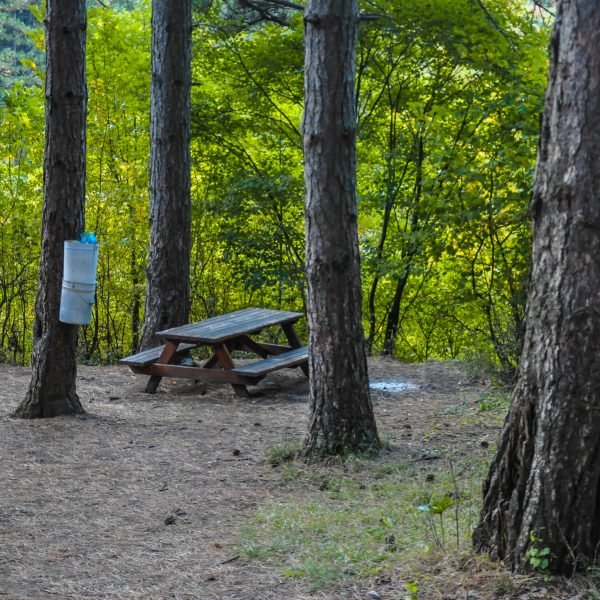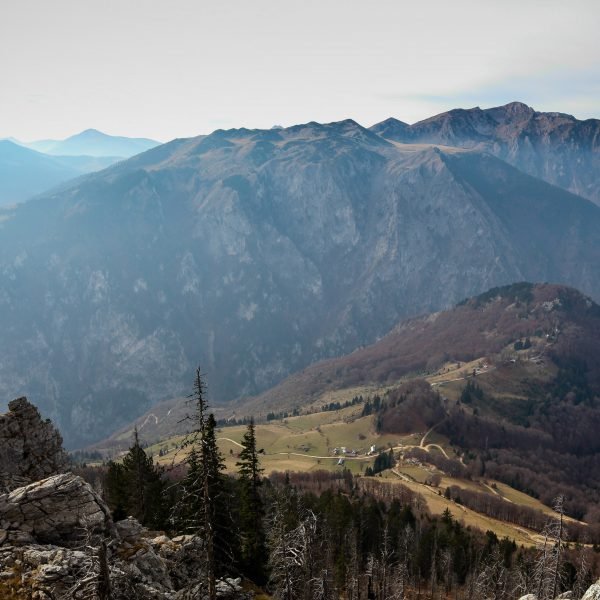Prokletije mountains range extends to the north – south in the length of 50 km and the width of 26 km.
They ascend towards the end of the valley (500-600 m) reaching over 2000 meters altitude with deep river valleys Lumbardhi and Erenik River, including Drin River on the border of southern side.
Prokletije Mountains Massif is made out of three parts:
Mountains located in north and north – east part of Bistrica (Lumbardh) from Peja make northern part of Prokletije Mountain massif starting from Mali i Thate from Dukagjini and Mokna valley. Starting from Mokna, this mountain massif turns south – west stretching to Maja e Re (1812 meters), and again stretching from this point towards west and continuing through Maja Shiqimi (2155 meters) to Zleba with Rusolja peak (2381 meters). Going to west, Shtedini Mountain (2272 meters) belong to this mountain chain, including Hajla (2400 meters), Mali Shishka with its peak Maja e Hasanit (1871 meters), Mali Bregut with its peak Velekut (2015) and Pokleni (1376 meters).
Mid part of Prokletije mountains made mountains located between Lumbardhi, Koprivnik with Maja Qvrlen (2460 meters), Strellc Mountain (2377 meters), Qafa e Nekut and Mylishevci. Further towards west, this part belongs to Lumbardhi Mountains with Guri I Kuq peak (2522 meters), Malet Nexhinat (2341 meters) and Plaku (2426 meters).
Southern part lays in south – west direction, starting from Bistrica in Decani region and compounds of Decani Mountains as per following: Vokshi (1641m, Junik Mountain with Rrasa e Zogu peak (2296m), Gjeravica (2656 meters), Bogiçevica (2103 meters) Maja e Ropës (2505 meters), Maja e Qenit (2406 meters) and Marjashi (2530 meters).
National park “Bjeshkët e Nemuna” characterizes over 1000 species of relic, endemo – relic and endemic autochthonous plants of Balkan and Europe, excluding mossy, eczema and fungus. There are over 33 species within Alps and Sub – Alps regions, including 6 subs – endemic and 128 endemic species in the Balkan with scientific, economic and medical values. Kosovo territory consists of 26 endemic species with 11 species that can be found with the park itself. There are 18 endemic species in the Balkan region. According to red book of vascular flora of the Republic of Kosovo, 126 species has been declared as endangered species with 6 species being on the Red list of UNESCO European championship – New York, 1991.
As far as flora richness is concerned, Prokletije Mountains’ national park is also characterized as rich animal life area, including endemic species and relics. It includes 8 fish species, 13 species of amphibians, 10 species of crawlers, 148 bird species, 37 mammals’ species and 129 butterfly species from Lepidoptera family branch. There have been 148 bird species noted until present, but there are allegations that there are over 200 bird species with international value and this is why Prokletije Mountain have been identified and recognized on the international list by the IBA.
Location
“Bjeshket e Nemuna” makes west suburb of Kosovo, descending almost vertically to the east and northeast along the end of Dukagjini valley and the valley of the Ibar River. In the West it closes the mountainous border with Albania and Montenegro. This mountain range extends to the northeast, in the length of 50 km and the width of 26 km.
The National Park includes the territories of five municipalities: Peja with 32,311 ha, or 52%, Decani 16,881 ha or 27%, Istok 4973 ha, or 8%, Junik 5,300 ha, or 8%, and Gjakova 3032 ha or 5%. The total area of the Park covers an area of 62,488 ha, or 5.7% of the territory of Kosovo.
History
Because of its characteristic geographical location, geological structure and hydrological values this area has a very interesting biological and landscape diversity. It was declared the National park in January 2013.
Nature
“Bjeshket e Nemuna” for its geography, geomorphology, flora and fauna is an important natural range in Kosovo, but also in the entire Balkan Peninsula. In that regard, this area is among the most typical mountain massifs in the Balkans, with more than 1,000 plant species researched so far.
The vegetation of the Park has seen significant changes during the evolutionary development. All plant species that had survived the Ice Age, along with new species that were created during the time, today create different plant communities (phytocenoses), and some of them are endemic species. According to available data, in the “Bjeshket e Nemuna” there are 33 endemic species.
In addition to rich flora, this area is characterized by the richness of fauna as well. Based on previous research, the structure of fauna can be divided into: 8 fish protected natural areas of 56 species, 13 species of terraqueous, 10 species of reptiles, 178 species of birds, 129 species of butterflies, 37 species of mammals. Among mammals, the most representative are: the lynx (Lynx lynx), brown bear (Ursus arctos), European roe deer (Capreolus capreolus), wild goats (Rupicapra rupicapra), imperial eagle (Aquila heliaca), Mountain Eagle (Aquila chrysaetos), capercailzie (Tetrao urogallus), etc., which have national and international status.
Sights
“Bjeshket e Nemuna” is not only a biodiversity center, with a large number of rare, endangered and endemic species of flora and fauna, but also an example of the cultural and ethnographic heritage in the region, and traditional ways of life in the mountains.
Tourism
The National Park “Bjeshket e Nemuna” provides good conditions for active recreation and a healthy lifestyle. Walking, hiking, biking, are only some of the activities that visitors can enjoy.
Connection
The National Park is situated near five cities: from Dečani 33 km, from Junik 45 km, from Peja 47 km away, from Gjakova 55 km, from Istok 72 km. From the capital of Kosovo, Prishtina, it is 120 km away.
Gjeravica Lake
Đeravica Lake or Gjeravica Lake (Albanian: Liqeni i Gjeravicës; Serbian: Језеро Ђеравица) is a mountain lake in Kosovo located just under the summit of Gjeravica. The lake is about 2,200 m (7,218 ft) altitude. It is shaped like a tooth and is the origin of the Erenik River which flows down to the Metohija region of western Kosovo. The maximum length of this lake is 240 m (787 ft) and the width is 120 m (394 ft). The lake is known for is its many salamanders, which feast on flying insects. The lake has a maximum depth of 3.8 m (12 ft). The Lake contains many fish. It has an area of 2 hectares.










